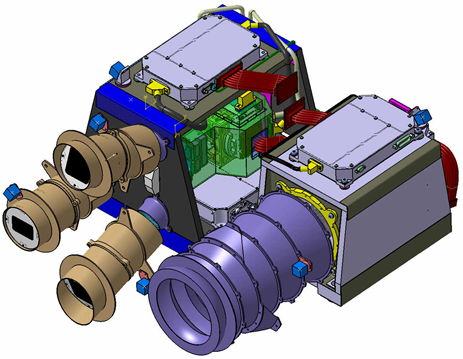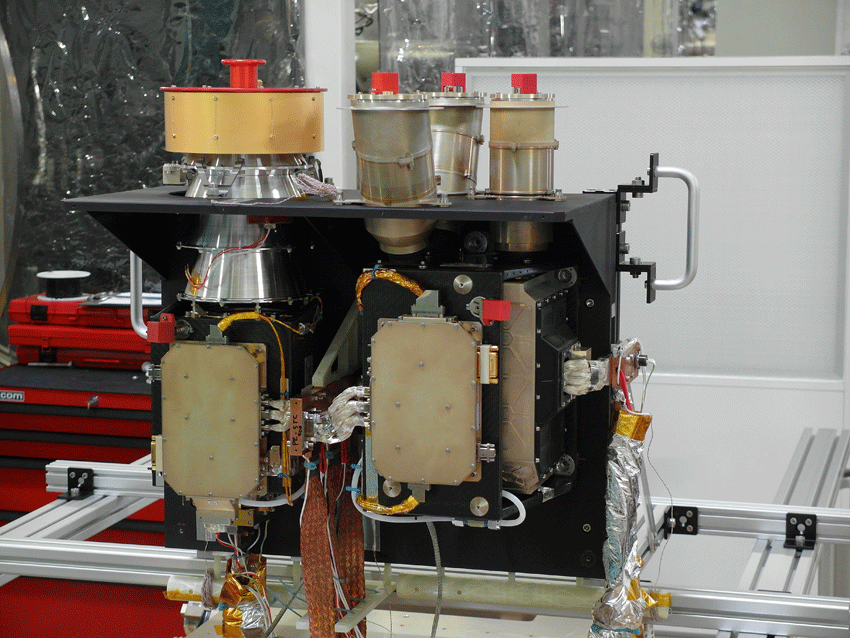BepiColombo Symbio-Sys Instrument
MCSE was involved in the development of the Proximity Electronics for the Simbio-Sys Instrument of the BepiColombo mission to Mercury

ESA/JAXA Mission
Launch: 20 October 2018
Arrival at Mercury: 2025
2 spacecrafts: the Mercury Planetary Orbiter (MPO) and the Mercury Magnetospheric Orbiter (MMO)
Polar orbit around Mercury
Goal of MPO: surface and internal composition study of Mercury
Goal of MMO: Mercury’s magnetosphere study
SIMBIO-SYS Suite of Instruments
SIMBIO-SYS is an instrument of the BepiColombo Mission to Mercury.
It includes three optical channels driven by a common Main Electronics. The 3 channels form the Instrument Front End are identified as follows:
- High Resolution Imaging Channel (HRIC)
- Stereo imaging Channel (STC)
- Visual and Infrared Hyper-spectral Imager (VIHI) channel.
- SIMBIO-SYS is developped by a consortium involving Italy and France
Micro-Cameras & Space Exploration has completed breadboard and EM developments phases of HRIC and STC Proximity Electronics, with successful CDR, and has provided the flight model design. MCSE was also involved in the realization of the VIHI PE channel.
The Proximity Electronics (PE) main functions are the following:
- Main Electronics (ME) commands reception and decoding
- Visible Detector bias generation
- Visible Detector clock generation (the PE generates the correct clocking sequence to read the Visible Detector image area, in accordance with the commands sent by the ME)
- Visible Detector video signal digitisation (ADC) with pixel binning capability
- Temperature and other housekeeping readout, conversion and transmission to ME
- Visible Detector temperature control
- Video data emission to ME
MCSE Main characteristics: TID 80Krad; SEE >70 MeVcm2/mg; SpW@100 Mbits/s; Res. 14 bits; 2.8 W – 350g

